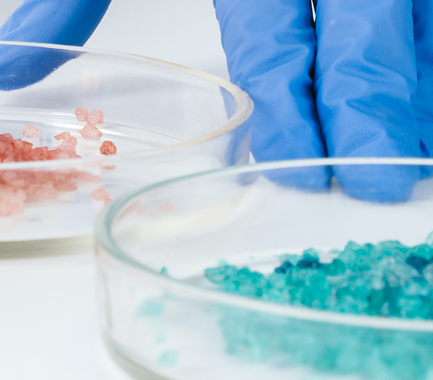Your contact
PENPET-Team - Hamburg

Tim Meister
Sales
Tel. +49 (0) 40 - 675 7 99 40
sales@penpet.de
Get in touch with us.
Methyl Methacrylate (MMA)
Methyl Methacrylate (MMA) is an important raw material in the chemical industry. It is of great importance as a starting material for the production of acrylic glass. This is produced by polymerizing the substance and is therefore also referred to as polymethyl methacrylate (PMMA). Methyl methacrylate itself is usually obtained in a two-stage process from acetone cyanohydrin, which is first converted to methacrylic acid amide and then esterified to methyl methacrylate. There are also ways of producing it from ethylene and isobutene.
In addition to the production of acrylic glass, methyl methacrylate is also used in the manufacture of two-component adhesives and in medical technology. Methyl methacrylate is a main component of contact lenses, dentures and bone cement for the attachment of artificial joints. It is also used in the manufacture of many other products such as acrylic fibers, resins, inks or wood impregnations.
You can rapidly and reliably order the required amount of methyl methacrylate from PENPET. We look forward to receiving your inquiry for an individual offer. Delivered as a liquid in tank containers, as well as in drums or IBCs.
CAS no. 80-62-6
EINECS no. 201-297-1
Molecular structure: C5H8O2
Synonyms: MMA, methyl methacrylate
Application examples: Manufacture of acrylic glass, contact lenses, dentures, bone cement, adhesives, coatings, acrylic fibers and other plastics
More Information
As an ester, methyl methacrylate (MMA) is made up of two components, as the name methyl methacrylate indicates. In principle, it can be split into the two starting materials methanol and methacrylic acid. However, the compound tends to polymerize at elevated temperatures, i.e. to chain into increasingly complex structures. This property, which methyl methacrylate shares with numerous other industrially used carboxylic acid esters, is the basis for its use in the manufacture of plastics.
Methyl methacrylate (MMA) is a colorless and flammable liquid with an unpleasant odor that is described as sulfurous to fruity. The fumes from the volatile compound are heavier than air and spread along the ground. Dangerous remote ignition is therefore possible even from a remote ignition source.
Methyl methacrylate is only slightly soluble in water and floats on contact with water. When mixed with water, the substance forms an azeotrope with a reduced boiling point of 83 °C. However, methyl methacrylate is readily soluble in certain organic solvents such as ethanol, acetone and chloroform.
Both the liquid itself and the vapors of methyl methacrylate (MMA) are reactive and highly flammable. They can form dangerous, explosive mixtures with the ambient air. The substance must therefore be kept away from sources of ignition and electrostatic charges.
During the polymerisation of methyl methacrylate, there is a risk of explosion due to the sudden increase in temperature and reaction speed (Trommsdorff effect). A controlled polymerization can be triggered, for example, by using peroxides. However, methyl methacrylate can also polymerize spontaneously, which is why the substance must be stored in a stabilized state after production. Impurities, UV light and exposure to oxidizing agents increase the tendency for spontaneous polymerization. Since heat also promotes this process, methyl methacrylate should always be stored at temperatures below 25 °C and protected from light. In order for the added stabilizers to be effective, the vessels may only be filled to a maximum of 90% to ensure sufficient air contact.
As a hazardous substance for the skin, methyl methacrylate (MMA) irritates the skin and eyes. Contact can also trigger allergic skin reactions. Dermatological and ophthalmological treatment is required. The vapors are irritating to the respiratory tract and may cause headaches, nausea and dizziness. Swallowing the substance leads to irritation of the mucous membranes in the mouth, throat and gastrointestinal tract. In tolerance studies on animals, harmful effects on the kidneys and liver were also observed when high concentrations of methyl methacrylate were inhaled. A carcinogenic effect is not known.
Methyl methacrylate is rapidly degraded in the environment but is considered harmful to aquatic organisms. It is therefore classified as slightly hazardous to water and should not be released into the environment.
